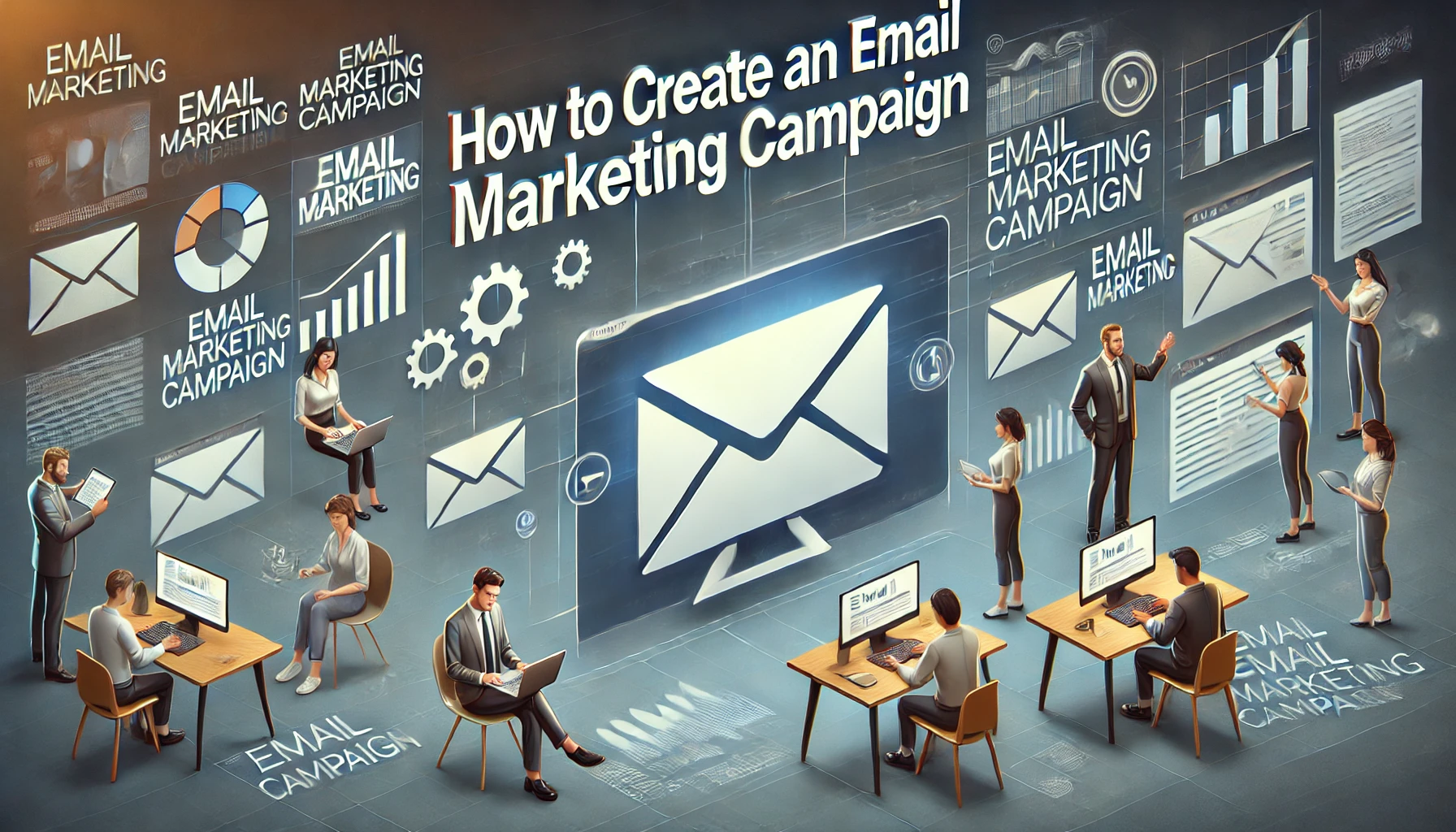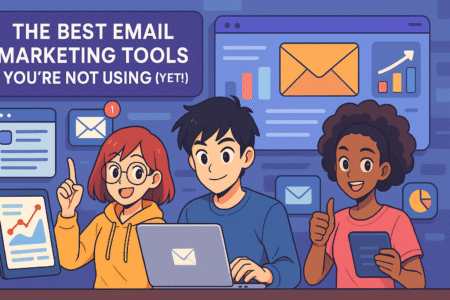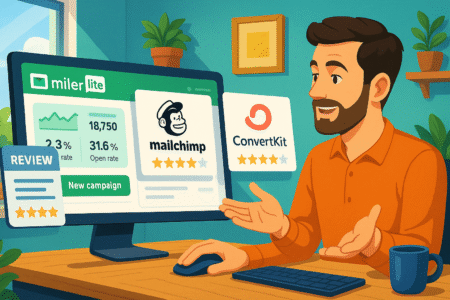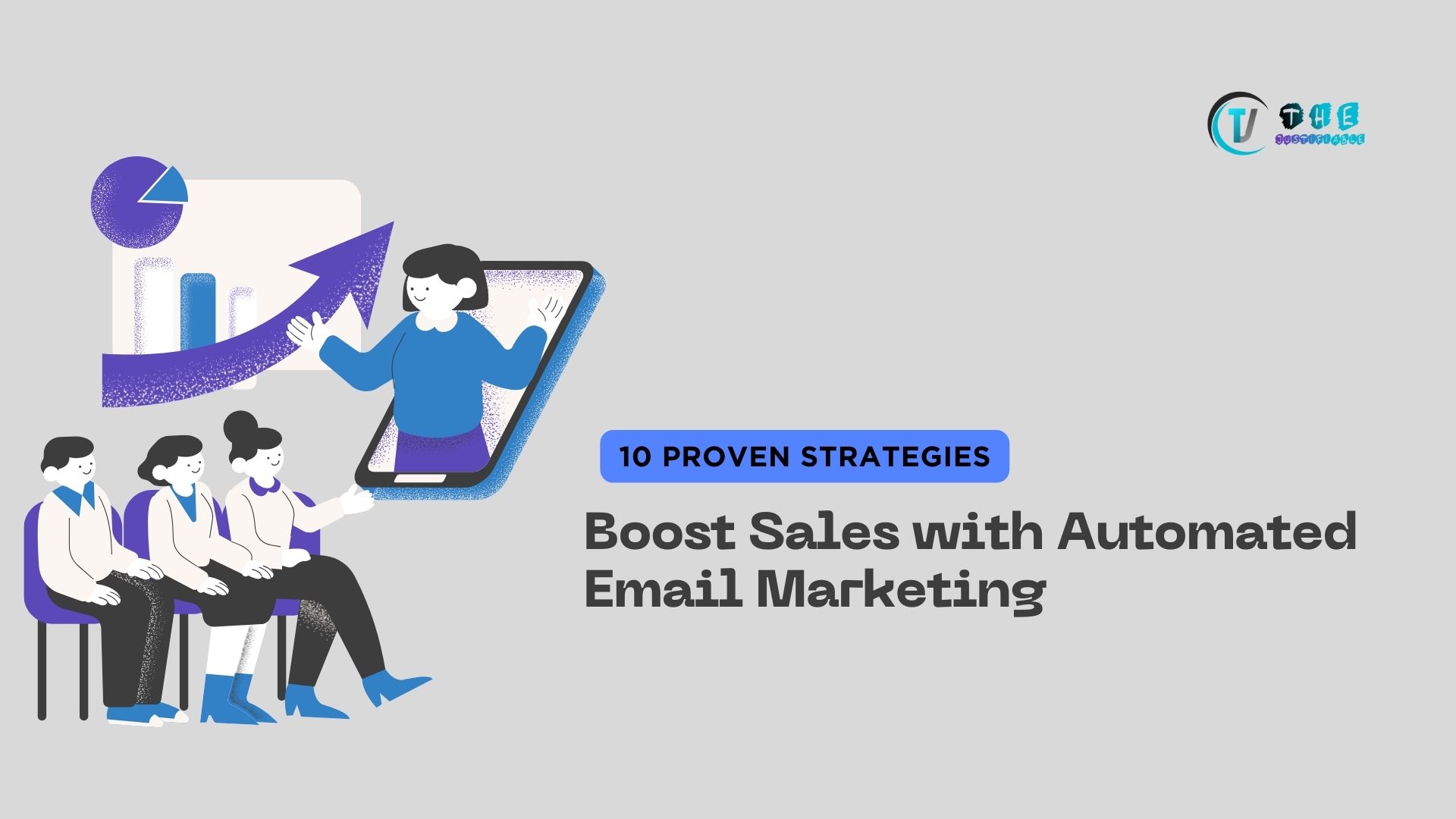Table of Contents
Are you aiming to boost conversions with an email marketing campaign? Wondering how to create an email marketing campaign that truly engages your audience?
This comprehensive guide will walk you through every essential step to crafting a successful email marketing campaign.
Crafting A Strategic Email Marketing Campaign
Creating an effective email marketing campaign starts with a solid strategy. A well-planned approach lets you connect with your audience and align emails with their needs. Here’s how to set the foundation for a successful campaign.
Setting Clear Campaign Goals
Before diving into the campaign, outline what you aim to achieve. Goals provide direction and shape your messaging. Ask yourself: Is your focus on brand awareness, boosting sales, or building loyalty? Each goal determines how you engage subscribers.
Well-defined goals let you measure success and guide your efforts. By setting objectives like open rates or conversions, you create a framework for tracking progress. This approach prevents wasted resources and keeps your campaign focused and effective.
Creating realistic, specific goals improves clarity. Without goals, it’s easy to lose direction. A strong focus lets you craft relevant, engaging content that aligns with both your brand and audience needs.
Align your goals with audience preferences to build a campaign that resonates. Think of goals as a bridge between what you offer and what your subscribers value. This foundation paves the way for meaningful interactions.
Defining And Targeting Your Audience
Knowing who you’re speaking to is essential for an effective campaign. Start by analyzing demographics, interests, and challenges to create targeted messaging. The more precise you are, the more likely your emails will engage your audience.
Understanding your audience makes it easier to tailor content that grabs attention. When you personalize messaging, engagement rates typically increase. Consider factors like age, location, and purchase behavior to build relevant content.
Segmentation enhances targeting, grouping subscribers by preferences for a more personal touch. This approach boosts open rates and interactions, as each email feels custom-made, showing you understand their interests.
Regularly analyze engagement metrics to adapt your approach. A well-targeted email strategy leads to higher conversions and loyalty, turning subscribers into long-term fans who look forward to your messages.
Choosing The Ideal Campaign Type
Choosing the right email campaign type impacts success. Different campaigns fulfill various objectives, like introducing new products, sharing updates, or nurturing leads. Selecting a campaign type aligned with your goals and audience needs is crucial.
For example, welcome emails are great for onboarding new subscribers, while promotional campaigns highlight special offers to drive sales. Drip campaigns work well for nurturing relationships over time, helping keep your brand top of mind.
Seasonal campaigns create urgency, especially around holidays or sales events, encouraging prompt action. Aligning campaign types with objectives maximizes effectiveness, creating a balanced email strategy.
Evaluate campaign types periodically to ensure they remain relevant. Adjusting your approach as goals evolve keeps emails fresh, catering to subscriber preferences for a well-rounded strategy that delivers results.
Building And Segmenting An Email List
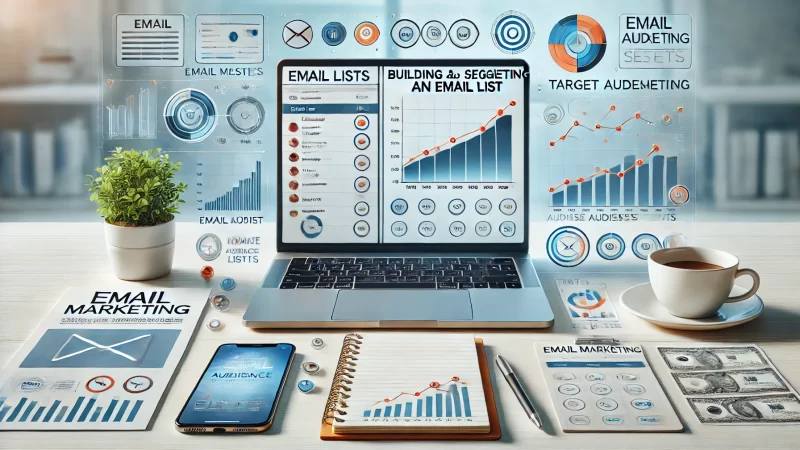
A well-segmented email list forms the backbone of a successful campaign. Building a list of quality leads and segmenting it effectively allows for more personalized and impactful communication that keeps subscribers engaged over time.
Creating An Irresistible Lead Magnet
Lead magnets attract new subscribers by offering valuable resources in exchange for emails. Think guides, discounts, or checklists tailored to audience interests. The key is to provide immediate value, making sign-ups feel worthwhile and beneficial.
An engaging lead magnet sets a positive first impression, motivating subscribers to open future emails. Quality content builds trust, showing your emails offer valuable insights or exclusive deals, making subscribers eager to stay engaged.
Lead magnets work best when they solve problems or address specific needs. For example, a time-management guide resonates with productivity-focused readers. Relevant offers like these drive sign-ups by directly appealing to audience interests.
Keep lead magnets simple yet impactful. Subscribers appreciate straightforward, useful content, so avoid overly complex or lengthy resources. This streamlined approach builds a loyal, engaged list ready to interact with your campaigns.
Optimizing Sign-Up Forms For Leads
Sign-up forms are crucial for capturing new leads. Effective forms are easy to complete and clearly highlight the benefits of joining. Mention perks like exclusive content or discounts to boost appeal and encourage more subscriptions.
Simplifying forms by requesting minimal information improves conversions. Fewer fields reduce friction, making it easier for visitors to sign up. An overly detailed form can deter potential subscribers, so keep it quick and user-friendly.
Where you place your sign-up form matters, too. Try adding forms to high-traffic pages or using pop-ups triggered by exit intent. Strategic placement increases visibility, maximizing sign-up opportunities with every page visit.
Customize sign-up forms to target audience needs, mentioning benefits relevant to their interests. For instance, if targeting online shoppers, emphasize “exclusive discounts” to draw attention and drive conversions for a more responsive list.
Segmentation For Tailored Campaigns
Segmentation is essential for delivering personalized emails. By dividing your list into meaningful groups, you can send content that feels customized, increasing engagement and reducing unsubscribe rates.
Consider segmenting by purchase history, engagement level, or interests. Segmented campaigns feel more relevant and valuable, making subscribers more likely to engage and interact with your messages.
Timing is a critical part of segmentation, too. Send specific offers or updates based on recent activity to make emails feel immediate and timely. Subscribers respond well when content is relevant and arrives at the right moment.
Regularly review and update segments to keep them accurate. As preferences shift, updating segmentation ensures content remains relevant. A well-organized list supports long-term engagement and campaign success.
Writing Engaging Email Content

Writing engaging email content captures your audience’s interest and drives them to take action. Thoughtful content, from subject lines to body text, sets the tone for a meaningful connection that keeps subscribers reading and engaging.
Crafting Attention-Grabbing Subject Lines
Subject lines are the first impression of your email. I suggest creating concise, impactful subject lines that spark curiosity, convey benefits, or ask questions. Effective subject lines increase open rates, encouraging readers to explore your content.
To make subject lines stand out, think about personalization. Mentioning the subscriber’s name or relevant details creates a sense of connection. This approach makes the email feel tailored, encouraging readers to open and engage with the content.
Another tactic is using time-sensitive language, like “limited offer” or “only today.” I’ve found that urgency often inspires quicker action. Just be genuine with urgency to avoid losing reader trust with overused tactics.
Experimenting with different subject lines helps you learn what resonates. A/B testing various options can reveal which words, length, or tone work best for your audience. The more you understand their preferences, the better your subject lines will perform.
Structuring Compelling Body Content
The body of your email should deliver on the promise of the subject line. I recommend keeping paragraphs short, using clear language, and focusing on one main idea. Concise, engaging content holds attention and improves readability.
Incorporate visuals like images or icons to make the email visually appealing. I’ve noticed that well-placed visuals break up text, enhancing engagement. Ensure images are relevant, reinforcing the message without distracting from the main points.
Consider using bullet points or numbered lists to make key points easily digestible. This structure helps readers scan and retain information, especially if the email includes multiple details or benefits they need to grasp quickly.
End each section with a smooth transition leading to the next point or call-to-action. This method guides readers through the email naturally, making them more likely to absorb the information and take the desired action.
Using Effective Calls-To-Action (CTAs)
CTAs are crucial in guiding readers toward specific actions. I suggest crafting CTAs that are direct, clear, and benefit-focused. A strong CTA tells readers exactly what to do next, increasing click-through rates and conversions.
Make CTAs visually distinct by using buttons or bold text. An eye-catching CTA stands out and encourages interaction. Use action words like “Get,” “Discover,” or “Claim” to create excitement and make the CTA feel more engaging.
Position CTAs strategically within the email. For longer content, place multiple CTAs, especially near key points, to capture interest when it’s at its peak. This approach makes it easier for readers to act without scrolling.
Personalizing CTAs based on the audience segment can also boost responses. Tailoring CTAs to specific needs or interests shows readers you understand them, increasing their likelihood of clicking through and converting.
Designing Impactful Email Layouts
An impactful email layout enhances readability and creates a positive visual experience. Thoughtful design elements, like branding, mobile-friendliness, and clarity, are essential in ensuring the email is both attractive and effective.
Incorporating Brand Visuals And Elements
Brand visuals help your email feel consistent and recognizable. I recommend including your logo, brand colors, and fonts to create a cohesive look. This design approach reinforces your brand identity and builds trust with readers.
Choose images that complement the content and evoke the right emotions. Visuals should support the message rather than distract from it. I suggest using images strategically to enhance the story without overwhelming the text.
Consider balancing visuals and text for clarity. I’ve found that too many images can clutter the email, while too little can make it feel bland. Finding that balance makes the email visually appealing and easy to read.
Icons and dividers are also useful for organizing content. Use icons to highlight features or benefits, while dividers can separate sections, making it simpler for readers to digest information at a glance.
Ensuring Mobile-Friendly Design
With many readers checking emails on mobile, mobile-friendly design is crucial. I advise using responsive layouts that adapt to different screen sizes. This flexibility enhances the reader’s experience, whether on a phone or desktop.
Keep text legible by choosing a readable font size. Small text can be hard to read on mobile, so I recommend slightly larger fonts for better accessibility. This simple adjustment makes your email more user-friendly.
Optimize images to load quickly on mobile devices. Compressing images ensures faster load times, reducing the risk of losing impatient readers. Slow-loading emails can deter readers, so focus on efficiency in mobile design.
Ensure buttons and CTAs are easy to click on mobile. Larger, well-spaced buttons prevent accidental taps and make the experience smoother. I always suggest testing emails on various devices to confirm the mobile experience is seamless.
Avoiding Spam Filters And Triggers
Avoiding spam filters is essential for email deliverability. I suggest avoiding spam-trigger words like “free,” “urgent,” or “guaranteed.” Instead, focus on clear, genuine language that appeals to readers without raising red flags.
Consider email authentication for better delivery rates. Methods like SPF and DKIM authenticate your emails, building trust with providers. I advise setting these up as they significantly reduce the risk of emails going to spam.
Keep emails short and to the point. Long emails with excessive links or attachments are often flagged. A concise email with relevant information is more likely to reach the inbox, ensuring your message is seen by subscribers.
Encourage subscribers to whitelist your email address. A friendly reminder in your welcome email can go a long way in improving deliverability. This small step increases the chances of your emails landing in the main inbox.
Selecting The Best Email Marketing Tool
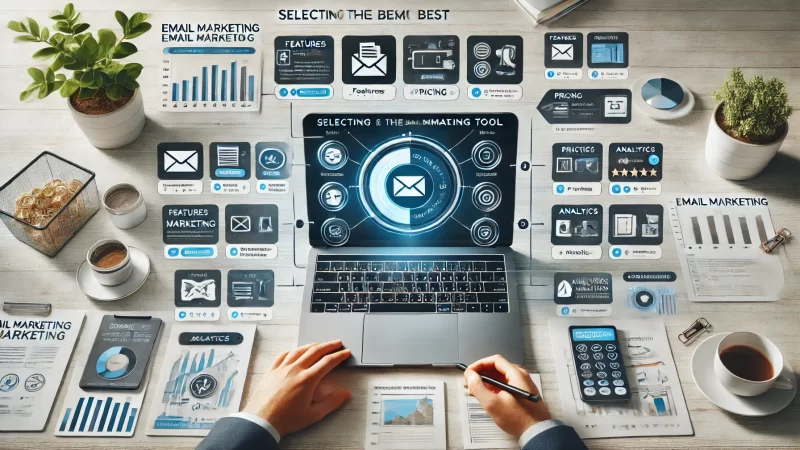
Choosing the right email marketing tool is crucial for campaign success. I recommend finding a platform that fits your needs, offers key features, and supports your strategy, enabling seamless campaign management and optimized results.
Reviewing Top Platforms For Campaigns
There are many email marketing platforms available, each offering unique features. I suggest exploring options like Omnisend, Aweber, or GetResponse. These tools provide robust features for creating, sending, and analyzing email campaigns effectively.
Consider the platform’s ease of use. A user-friendly interface makes campaign management simpler, especially for beginners. Choose a tool that feels intuitive, allowing you to focus more on content rather than navigating the software.
Evaluate customer support and resources. A platform with helpful support and training materials can be invaluable, especially during setup or troubleshooting. Good support enhances your experience and helps you get the most from the tool.
Cost is another factor to consider. Many platforms offer tiered pricing, so I recommend selecting one that fits your budget. Look for features that align with your needs to get the best value from your chosen platform.
Comparing Features For Optimal Results
Different platforms offer varied features for email marketing. I suggest focusing on features like automation, segmentation, and analytics, as these are essential for effective campaigns. Assessing these can help you choose the tool best suited for your goals.
Automation saves time by streamlining processes like sending welcome emails or reminders. Platforms like Mailmunch excel in automation, making it easy to set triggers and rules that boost engagement and interaction.
Segmentation allows you to create personalized campaigns for different groups. Tools that support in-depth segmentation, like ConvertKit, give you greater control over targeting, improving relevance and response rates.
Analytics is crucial for tracking performance. Look for platforms with detailed reporting on metrics like open rates and conversions. These insights help refine your strategy, ensuring continuous improvement in your campaigns.
Setting Up Analytics And Tracking
Analytics and tracking provide valuable insights into campaign performance. I recommend setting up tracking for open rates, click-throughs, and conversions to measure your progress and understand which areas need improvement.
Open rate tracking helps gauge subject line effectiveness. If your open rates are low, it might indicate your subject lines need tweaking. Monitoring this metric over time gives you insights into what appeals to your readers.
Click-through rates reveal how engaging your content is. High click-throughs show that readers find your CTAs enticing. By analyzing these rates, you can adjust content or CTA placement to maximize interaction.
Conversion tracking is essential for evaluating the overall success of your campaign. If conversions are low, consider revisiting your CTA or offer. Continuous tracking and adjusting strategies based on data help improve results over time.
Boosting Open And Click-Through Rates
Boosting open and click-through rates is essential for the success of your email marketing campaign. I believe focusing on timing, personalization, and testing can significantly enhance engagement and encourage subscribers to interact with your content.
Timing Emails For Maximum Impact
Sending emails at the right time increases the likelihood of them being opened. I suggest analyzing your audience’s habits to determine optimal sending times. Consider factors like time zones and peak activity periods to reach subscribers when they’re most attentive.
Different audiences may have varying preferences. For example, professionals might check emails during the morning commute, while others may prefer evenings. Testing different send times helps identify when your subscribers are most responsive.
I recommend using email marketing tools that offer send-time optimization features. These tools analyze data to automatically send emails when each subscriber is most likely to engage. This personalized timing can boost open rates significantly.
Monitoring and adjusting your send times based on engagement metrics is crucial. Keep an eye on open rates and make necessary changes. I find that regularly reviewing performance helps maintain high engagement levels over time.
Personalizing Content To Drive Engagement
Personalized content makes subscribers feel valued. Including their name in the greeting or tailoring content to their interests can enhance engagement. I advise collecting relevant data to create emails that resonate with each individual.
Segmentation plays a key role in personalization. By grouping subscribers based on behaviors or preferences, you can send targeted content. I suggest creating segments like purchase history or engagement level to deliver more relevant messages.
Dynamic content is another powerful tool. I recommend using placeholders that change based on subscriber data, such as location-specific offers. This approach makes your emails more appealing and increases the likelihood of interaction.
Remember to keep personalization genuine. Overdoing it can seem intrusive. I believe striking a balance ensures subscribers appreciate the tailored content without feeling overwhelmed.
Testing Subject Lines And CTA Variants
Testing different subject lines and CTAs helps identify what resonates with your audience. I suggest conducting A/B tests to compare variations and determine which versions perform better in terms of open and click-through rates.
When testing subject lines, try different lengths, tones, or keywords. I recommend experimenting with questions, statements, or even emojis to see what grabs attention. Small tweaks can lead to significant improvements in open rates.
For CTAs, test variations in wording, color, or placement. I find that clear and compelling CTAs encourage more clicks. Testing helps identify the most effective approach for motivating subscribers to take action.
Regular testing keeps your email marketing campaign fresh and effective. I advise making it an ongoing practice to continually optimize performance based on data-driven insights.
Analyzing Campaign Success Metrics

Analyzing campaign success metrics provides valuable insights into your email marketing performance. I recommend focusing on key indicators to understand what’s working and where improvements are needed, helping you refine your strategy for better results.
Tracking Key Metrics And KPIs
Tracking key metrics like open rates, click-through rates, and conversions is essential. I believe these KPIs offer a clear picture of your campaign’s effectiveness. Monitoring them regularly allows you to make informed decisions and adjustments.
Open rates indicate how compelling your subject lines are. If open rates are low, I suggest revisiting your subject lines or sender name. High open rates show that your emails are reaching and attracting your audience’s attention.
Click-through rates measure how engaging your email content is. If subscribers aren’t clicking on links or CTAs, consider refining your content or offers. I recommend analyzing which elements drive clicks to improve overall engagement.
Conversion rates reveal how successful your emails are at achieving campaign goals. Whether it’s sales or sign-ups, I advise tracking conversions to assess the impact of your email marketing efforts and identify areas for enhancement.
Using Insights To Improve Campaigns
Using insights from your metrics helps refine your campaigns. I suggest identifying patterns and trends in your data to understand subscriber behavior. This information guides adjustments that enhance performance and align with audience preferences.
For instance, if you notice higher engagement on certain topics, I recommend creating more content around those subjects. Conversely, if some emails underperform, analyze why and adjust your approach accordingly.
Segmenting data can uncover valuable insights. I advise looking at metrics by segment to tailor strategies for different groups. This targeted approach can lead to more effective campaigns and better overall results.
Continuously applying insights ensures your email marketing remains dynamic and responsive. I believe this ongoing optimization is key to sustained success and growth in engagement.
Evaluating Open And Conversion Rates
Evaluating open and conversion rates together provides a comprehensive view of your campaign’s effectiveness. I recommend analyzing how well your emails not only attract attention but also drive desired actions from subscribers.
If open rates are high but conversions are low, I suggest examining your email content and CTAs. Perhaps the content isn’t aligning with expectations set by the subject line. Adjusting the message can improve conversions.
Conversely, if open rates are low but conversions are high, focus on improving subject lines to reach more subscribers. I believe optimizing both aspects maximizes the overall impact of your email marketing campaign.
Regularly reviewing these rates helps you stay informed about performance trends. I advise setting benchmarks and goals to track progress and motivate continuous improvement.
Avoiding Common Campaign Mistakes
Avoiding common campaign mistakes is crucial for the success of your email marketing efforts. I recommend being mindful of pitfalls like spam triggers, inconsistent sending, and regulatory compliance to maintain a positive relationship with your subscribers.
Preventing Spammy Content And Triggers
Creating content that avoids spam triggers ensures your emails reach the inbox. I suggest steering clear of excessive punctuation, all-caps text, and spammy phrases. Crafting genuine, valuable content reduces the risk of being marked as spam.
Using a consistent sender name and email address builds trust. I advise against frequently changing these details, as subscribers may not recognize you, increasing the likelihood of emails being ignored or reported.
Including an easy way to unsubscribe is important. I believe respecting subscribers’ choices enhances your reputation. Making it difficult to opt-out can lead to spam complaints, harming your deliverability rates.
Monitoring spam reports and feedback loops helps identify issues early. I recommend addressing any problems promptly to maintain a healthy sender reputation and ensure your emails continue reaching your audience.
Staying Consistent With Send Frequency
Consistency in sending emails keeps your audience engaged. I suggest establishing a regular schedule so subscribers know when to expect your emails. This predictability can improve open rates and strengthen your relationship with them.
Sending too frequently may overwhelm subscribers, leading to unsubscribes. I believe finding the right balance is key. Assess your audience’s preferences and adjust the frequency accordingly to keep them interested without causing fatigue.
On the other hand, infrequent sending can result in subscribers forgetting about you. I recommend maintaining consistent communication to stay top-of-mind. Regular engagement helps build familiarity and trust over time.
Monitoring engagement metrics can guide your sending frequency. If you notice declining open rates, consider adjusting your schedule. I advise being flexible and responsive to your audience’s needs to optimize results.
Ensuring Compliance With Regulations
Compliance with email marketing regulations is essential. I advise familiarizing yourself with laws like CAN-SPAM, GDPR, or CASL, depending on your audience’s location. Adhering to these rules protects your business and builds trust with subscribers.
Obtaining proper consent before sending emails is crucial. I recommend using double opt-in methods to confirm subscriptions. This practice ensures you’re reaching people who genuinely want to hear from you, improving engagement.
Including clear contact information and an unsubscribe option is mandatory in many jurisdictions. I suggest making these elements prominent in your emails to comply with regulations and enhance transparency.
Staying updated on regulatory changes helps you remain compliant. I believe it’s important to periodically review legal requirements and adjust your practices as needed. This diligence safeguards your campaign and fosters a positive brand image.


